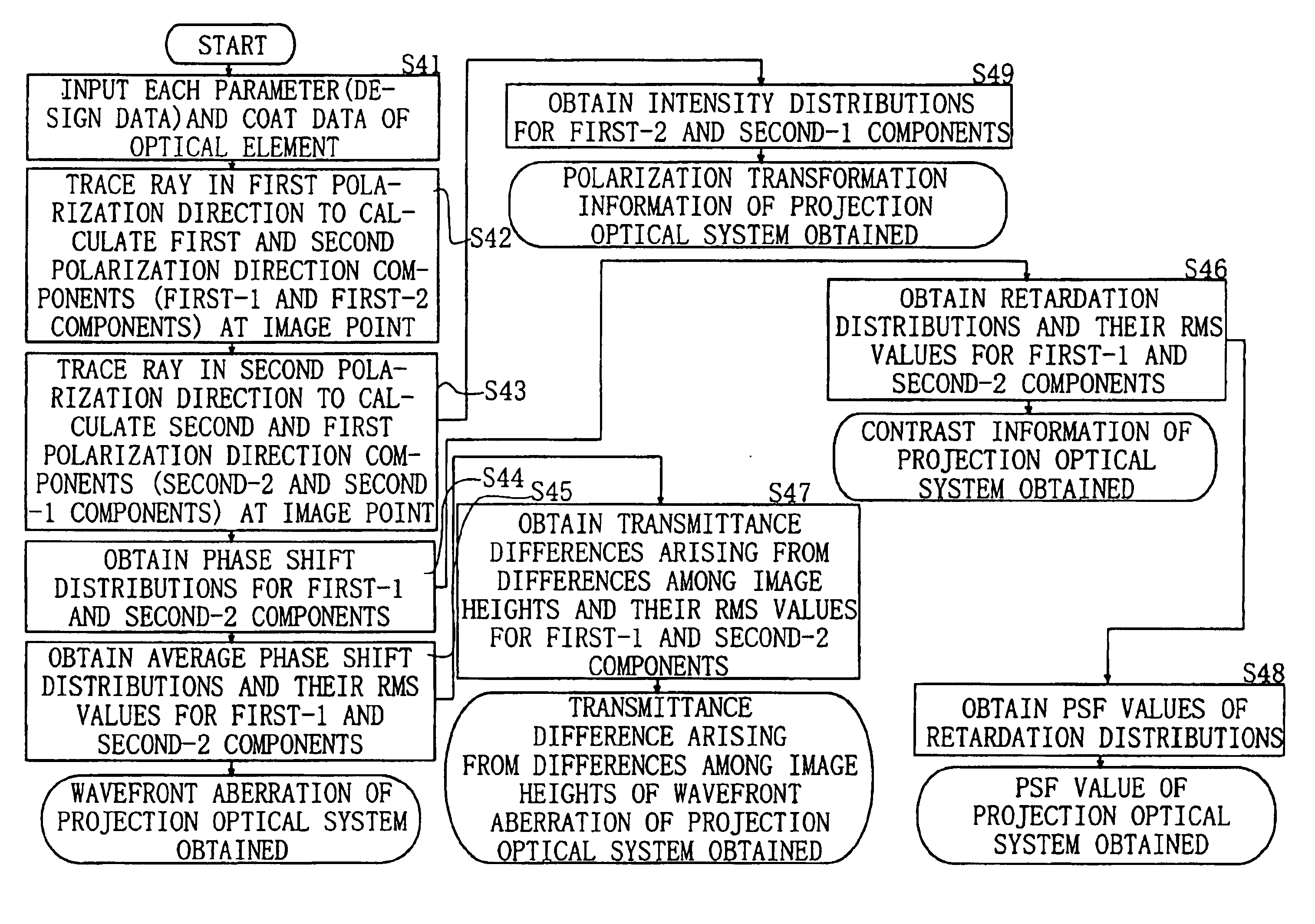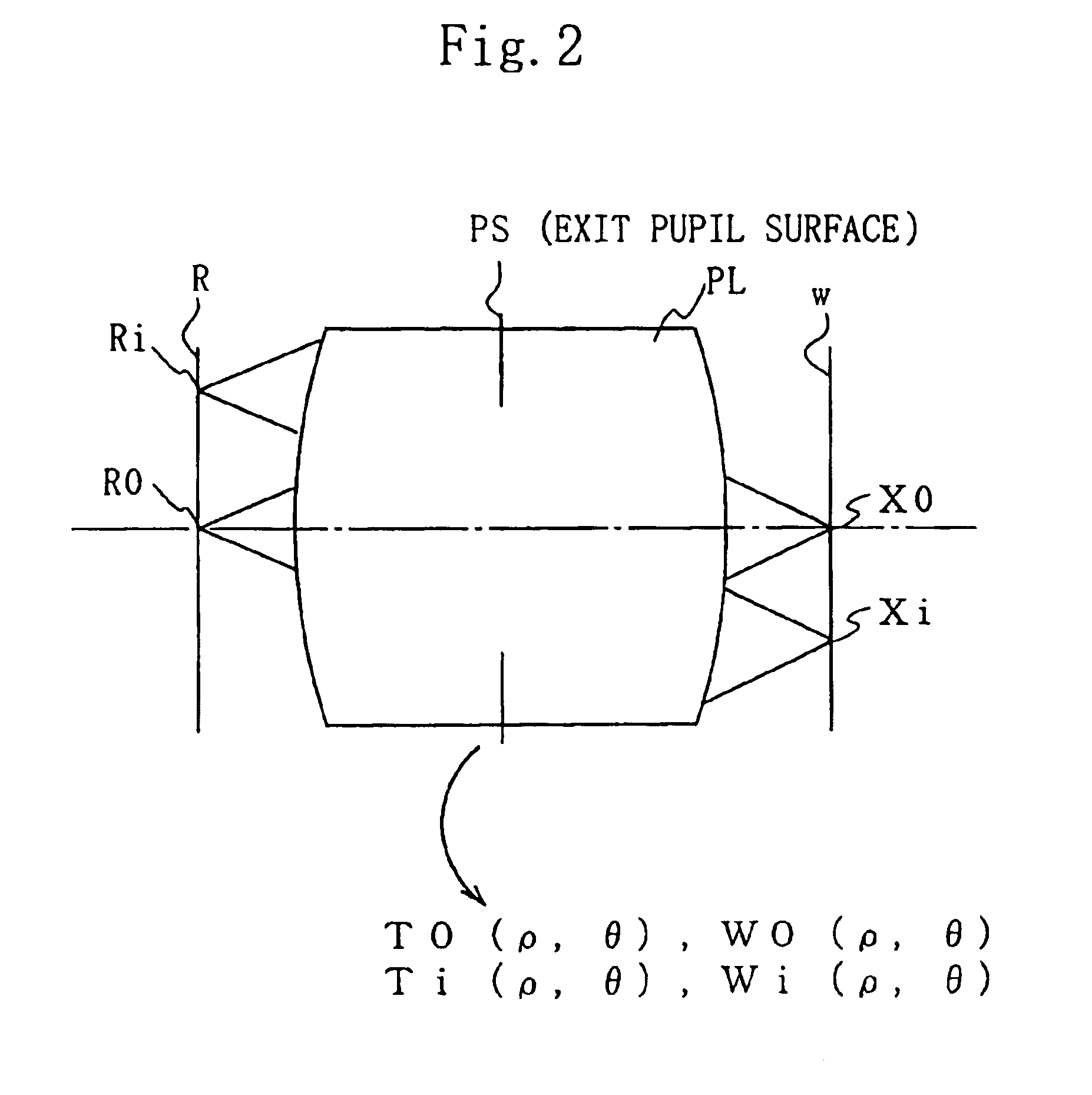Method for evaluating image formation performance
a technology of image formation and performance, applied in the direction of polarising elements, printing, instruments, etc., can solve the problems of critical defect in ultra high accuracy of optical systems, aberration occurring due to birefringence of lens materials, etc., to achieve sufficient accuracy, accurate results, and easy to perform
- Summary
- Abstract
- Description
- Claims
- Application Information
AI Technical Summary
Benefits of technology
Problems solved by technology
Method used
Image
Examples
first embodiment
[First Embodiment]
First of all, with reference to FIG. 1, FIG. 2, FIG. 3, and FIG. 4, a first embodiment of the present invention will be described.
According to the first embodiment, image formation performance of an optical system is evaluated using two main evaluation indexes (an evaluation index according to a transmittance and an evaluation index according to a phase shift).
In addition, the first embodiment is suitable for evaluating a projection optical system applied to an exposure apparatus. Thus, the following description is to be made on the assumption that the projection optical system is the evaluation object. Since a projection optical system has many optical elements such as lenses and reflection surfaces, calculations required for the evaluation are often complex. Thus, the procedure for obtaining each evaluation index that will be described in the following is assumed to be executed by a computer.
In the Specification, “average” and “RMS” are defined as follows.
An aver...
second embodiment
[Second Embodiment]
Next, with reference to FIG. 5, a second embodiment of the present invention will be described.
In the second embodiment, the first embodiment is applied to manufacturing (in particular, step S202 (coat allocation) that will be described later) of a projection optical system used for an exposure apparatus.
Next, the second embodiment will be described on the assumption that a projection optical system to be manufactured is a refractive projection optical system and that optical elements that compose the refractive projection optical system are a plurality of lenses. However, when a reflection type or reflection-refractive type projection optical system that has a reflection surface is manufactured, the present invention can be applied likewise (in this case, data of reflection surfaces is added to lens data).
FIG. 5 is a flow chart showing a procedure of the second embodiment.
(Step S100)
At step S100, an optical design for a projection optical system is performed so t...
third embodiment
[Third Embodiment]
Next, with reference to FIG. 6, a third embodiment of the present invention will be described.
In the third embodiment, as example 1 to example 4, the first embodiment is applied to a lens design (lens correction) of an optical system.
FIG. 6 is a table showing correction targets, evaluation indexes, and optimization parameters in the lens design (lens correction) of example 1 to example 4 according to the third embodiment.
PUM
| Property | Measurement | Unit |
|---|---|---|
| wavelengths | aaaaa | aaaaa |
| wavelength | aaaaa | aaaaa |
| wave length | aaaaa | aaaaa |
Abstract
Description
Claims
Application Information
 Login to View More
Login to View More - R&D
- Intellectual Property
- Life Sciences
- Materials
- Tech Scout
- Unparalleled Data Quality
- Higher Quality Content
- 60% Fewer Hallucinations
Browse by: Latest US Patents, China's latest patents, Technical Efficacy Thesaurus, Application Domain, Technology Topic, Popular Technical Reports.
© 2025 PatSnap. All rights reserved.Legal|Privacy policy|Modern Slavery Act Transparency Statement|Sitemap|About US| Contact US: help@patsnap.com



